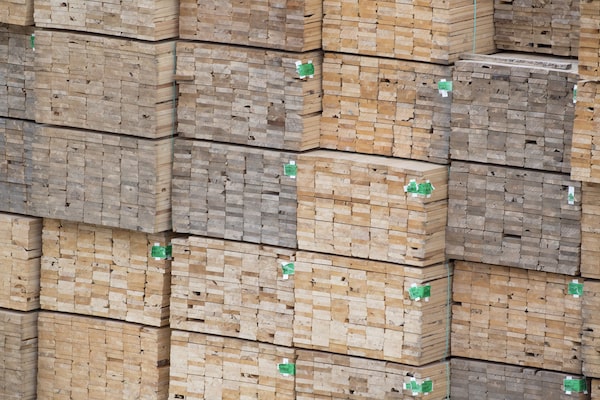
Lumber prices moved up 40 per cent over the past month to currently sit at US$500 per thousand board feet.JONATHAN HAYWARD/The Canadian Press
Jerome Powell used the term “disinflation” numerous times in his news conference following the U.S. Federal Reserve’s interest rate decision on Feb. 1. Disinflation means prices are still rising, but at a slower pace. The Consumer Price Index in the United States was up 9.1 per cent year over year in July and 6.5 per cent in December. The Fed chairman also noted that labour demand substantially exceeds the supply of available workers and last week’s nonfarm payroll numbers (517,000 compared with an expected 187,000 for January) reinforced expectations that interest rates will to continue to rise.
Rates and the line we are walking between inflation and recession continue to affect commodity prices. Let’s look at how some commodity prices have moved over the past month and their outlook for 2023.
The price of natural gas is down to US$2.43/MMBTU (million British thermal units) from a high in August of US$9.81. The price is down 32 per cent over the past month and down 42 per cent year over year. Higher prices in 2022 resulted in more production and ultimately an oversupply, which drove prices down to current levels. Any surplus is usually consumed as colder winter weather approaches, but this winter has been unseasonably warm in Europe and North America, resulting in reduced demand. Many European nations also voluntarily reduced natural gas use as a way to stockpile for the winter months. Also of note is that the Freeport LNG terminal in Texas, which provides 17 per cent of U.S. LNG export capacity, is still awaiting approval to restart. The terminal had shut down in June after an explosion in the plant. The plant is not expected to be fully operational again until March, which means more natural gas will go into storage.
Recession fears and the lockdown in China pulled copper prices below US$7,000 per tonne in 2022 from a record high above US$10,000 earlier in the year. The price of copper is up 3 per cent from last month, primarily because of the reopening in China and the idling of the Las Bambas mine in Peru. Protests and blockades sparked by the arrest of former president Pedro Castillo have choked off the transport links to the mine, which supplies 2 per cent of the world’s copper. Commodity analysts at Bank of America and Goldman Sachs see copper moving above the US$10,000 per tonne level by the fourth quarter, but forecasts from CIBC and others remain at or below US$9,000.
Lumber prices moved up 40 per cent over the past month to currently sit at US$500 per thousand board feet. A combination of mill downtime and lower-than-normal wholesaler inventory over the holiday period, along with concerns inventories may be too low for spring construction season, led to this jump in price. Industry publication Madison’s Lumber projects prices to range between US$500 and US$700 going forward with the lower level being the current average cost of production for West Coast sawmills.
Egg prices are also down in the past month after having almost tripled in 2022. The U.S. Department of Agriculture’s combined regional large-grade-A egg market has seen prices decline so far in 2023 to just over US$3 per dozen after peaking above US$5 last year. Beginning in February of 2022, roughly 5 per cent (44 million) of the egg-laying hens in the United States were culled because of the highly pathogenic avian influenza. Egg prices are expected to continue to fall this year as production ramps up again.
Price expectations for most commodities are still being driven at a macro level by inflation, interest rates and recession fears. We would expect commodity markets to continue to be volatile through 2023 as the inflation/recession battle plays out.
Brian Donovan, CBV, is the president of StockCalc, a Canadian fintech based in Miramichi, N.B.
Be smart with your money. Get the latest investing insights delivered right to your inbox three times a week, with the Globe Investor newsletter. Sign up today.